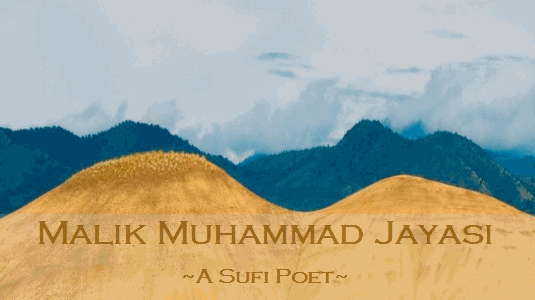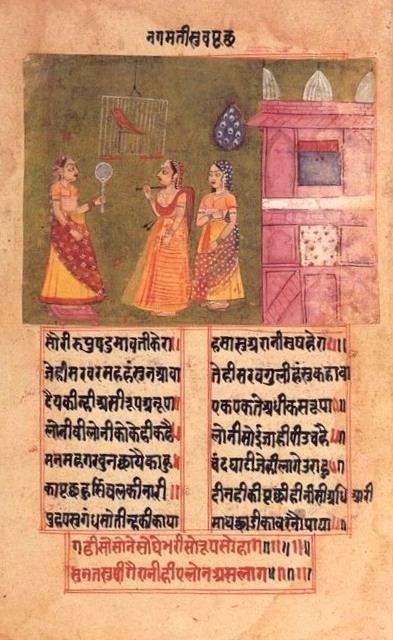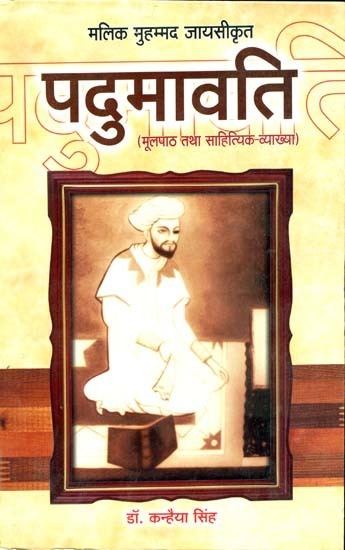Name Malik Jayasi Movies The Cloud Door Parents Malik Raje Ashraf | Died 1542 Role Poet | |
 | ||
Books The Padumawati of Malik Muhammad Jaisi [Malik Muhammad Jayasi] | ||
malik muhammad jayasi , malik muhammad jayasi padmavat , hindi sahitya
Malik Muhammad Jayasi (died 1542) was an Indian poet who wrote in the Avadhi language. His most notable work is Padmavat.
Contents
- malik muhammad jayasi malik muhammad jayasi padmavat hindi sahitya
- Padmaavat by Malik Muhammad Jayasi Hindi
- Biography
- Legacy
- Literary works
- References

रानी पद्मिनी की कहानी Padmaavat by Malik Muhammad Jayasi (Hindi) पद्मावत हिंदी मे
Biography

Much of the information about Jayasi comes from legends, and his date and place of birth are a matter of debate. As the nisba "Jayasi" suggests, he was associated with Jayas, an important Sufi centre of medieval India, in present-day Uttar Pradesh. However, there is debate about whether he was born in Jayas, or migrated there for religious education.

The legends describe Jayasi's life as follows: he lost his father at a very young age, and his mother some years later. He became blind in one eye, and his face was disfigured by smallpox. He married and had seven sons. He lived a simple life until he mocked the opium addiction of a pir (Sufi leader) in a work called Posti-nama. As a punishment, the roof of his house collapsed, killing all seven of his sons. Subsequently, Jayasi lived a religious life at Jayas.

Jayasi's own writings identify two lineages of Sufi pirs who inspired or taught him. The first lineage was that of the Chishti leader Saiyid Ashraf Jahangir Simnani (died 1436–37) of Jaunpur Sultanate: according to tradition, Jayasi's teacher was Shaikh Mubarak Shah Bodale, who was probably a descendant of Simmani. The second lineage was that of Saiyid Muhammad of Jaunpur (1443-1505). Jayasi's perceptor from this school was Shaikh Burhanuddin Ansari of Kalpi.
Jayasi composed Akhiri Kalam in 1529-30 (936 AH), during the reign of Babur. He composed Padmavat in 1540-41 (936 AH).
Some legends state that Raja Ramsingh of Amethi invited Jayasi to his court, after he heard a mendicant reciting verses from the Padmavat. One legend states that the king had two sons because of Jayasi's blessings. Jayasi spent the later part of his life in forests near Amethi, where he would often turn himself into a tiger. One day, while he was roaming around as a tiger, the king's hunters killed him. The king ordered a lamp to burned and Quran to be recited at his memorial.
Though his tomb lies in a place 3 km north of Ram Nagar, near Amethi, where he died in 1542, today a "Jaisi Smarak" (Jaisi Memorial) can be found in the city of Jais.
Legacy
More than a century after his death, Jayasi name started appearing in hagiographies that portrayed him as a charismatic Sufi pir. Ghulam Muinuddin Abdullah Khweshgi, in his Maarijul-Wilayat (1682-83), called him muhaqqiq-i hindi ("knower of the truth of al-Hind").
Literary works
Jayasi's most famous work is Padmavat (1540), a poem describing the story of the historic siege of Chittor by Alauddin Khilji in 1303. In Padmavat, Alauddin attacks Chittor after hearing of the beauty of Queen Rani Padmini, the wife of king Ratansen.
His other important works are Akhrawat and Akhiri Kalaam.
